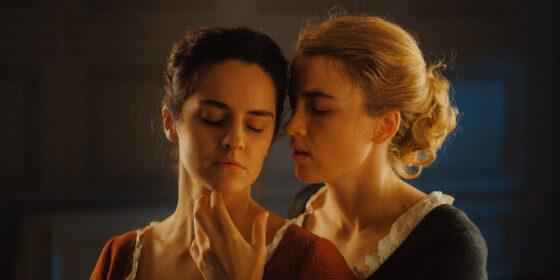Portrait of a Lady on Fire (Céline Sciamma, France) — Special Presentations

By Anna Swanson
Ironically, or perhaps fittingly, the first thing that stands out about Portrait of a Lady on Fire is its framing device. The film begins with artist and instructor Marianne (Noémie Merlant) posing for her students; when one inquires about a striking painting on the wall of her studio, the film transports to the time and place that inspired it, 18th-century Brittany. Marianne arrives at an island off the French coast after being commissioned to paint the wedding portrait of Héloïse (Adèle Haenel). This set-up positions the film as Marianne’s memory, a memory that involves her embarking on a passionate but brief love affair with her muse. Such a positioning should afford the film an elusive quality that captures the poetic power of memory to be so much more about how something felt than how it happened. While director Céline Sciamma is a skilled filmmaker—and indeed her images are beautifully composed, her soundscape is deftly employed, and her depictions of a lesbian relationship are sensual without ever being leering—the film never achieves an ethereal impression that would have conveyed the soul-stirring power of a memory that is of significance to Marianne. The film is at times quite literally haunting, with Sciamma presenting a number of otherworldly images that tease out a narrative connection to mythology. Portrait of a Lady on Fire’s ethereal qualities ultimately become simplified as its allusions are literalized. The craft of the film is undeniable, but with a central romance that never becomes the emotionally resonant experience it is set up to be, no amount of skilled assemblage can make Portrait of a Lady on Fire more than a beautiful decoration.
Anna Swanson- « Previous
- 1
- 2


